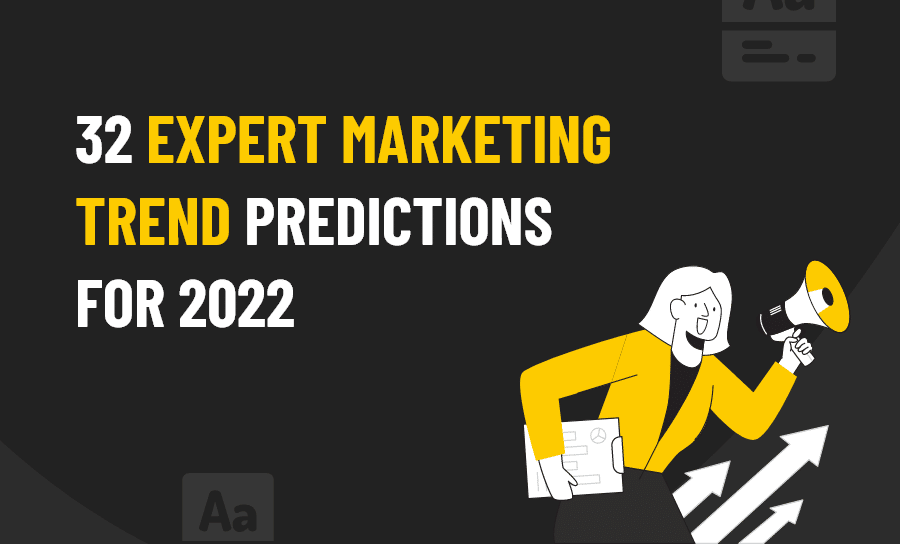2020 has been a challenging year (to put it mildly).
The Coronavirus pandemic unceremoniously hurtled into the marketing pool, creating a tidal wave of chaos. Consumers were furloughed, made redundant or had hours slashed. As a result, certain markets took an unfortunate profits nosedive. Others (like ecommerce and online businesses) saw profit margins stay consistent – or, in some cases, increase along with demand! Just like Kaoori did and now has turned into one of the biggest chess set providers in the UK.
With face-to-face interactions at a standstill, lead generation agencies have had to evolve and adapt. Of course, tried-and-tested strategies like cold-calling and emailing remain effective. However, successful companies have adopted additional methods to use alongside these classic approaches.
For instance, many companies have made the switch to remote working. This means database lists of phone numbers for cold-calling may no longer be operational, and those that are manned are likely to have reduced staffing (raise your hand if you tried calling your Internet tech support team during Lockdown only to be met with an automated chatbot)!
Also, the needs of the client may have changed drastically in a very short time. Agencies need to understand the new challenges potential clients are facing in order to create effective lead generation campaigns.
As the year draws to a close, predictions for 2023 are cautiously optimistic. Lead generation agencies are adapting and working hard to meet the evolving needs of prospective clients. Knowing your customer better than they know themselves is one of the most important sales tactics around. And in today’s ever-changing market, it’s more important than ever for turning leads into wins!
We’ve asked 32 lead generation industry experts to share their insights into marketing trends for 2023. How will lead generation methods change over the next 12 months?
Not only did they provide some fantastic predictions – they also shared some data to back it up (and at Pearl Lemon, we’re all about the data :D).
Here’s what they had to say:

Katja Doemer
Chief Marketing Officer - Inriver
The upcoming year will surely hold some surprises in terms of marketing trends. However, based on survey data and customer insights, we know the role of product information, customer experience, and sustainability will be significant in 2023. The importance of better and more transparent product information is essential as it helps buyers to buy, whether it is in-store or online.
inRiver conducted research into what turns browsers into buyers and not surprisingly, many consumers (both B2B and B2C) are marrying online and in-person product perusal. They research products online and purchase offline (ROPO) and vice versa for work and in their personal lives. According to our research, more than half of buyers research products online while in-store, and the number is significantly higher for the 16-24 and 25-34 age groups. When product content isn’t accurate, available, or consistent across channels, buyers lose trust and purchase elsewhere. The buying experience matters.
In addition to product information and positive customer experience, buyers value sustainability. They want to buy from environmentally responsible vendors, they use sustainability or eco-friendly practices to determine what they buy, and they are even willing to pay more for sustainable products. inRiver’s research found that 63% of buyers would stop using a product if it was detrimental to the environment, and 62% would reconsider their purchase decisions if retailers were more transparent about the environmental impact of delivery. These marketing trends will impact commerce in 2023 across verticals and industries.

David Toby
Director & Co Founder - Pathfinder Alliance
I run a boutique, digital marketing agency in Perth, Western Australia. Upcoming marketing trends listed below:
- Massive Use of Sales Intelligence Technology
Technology has brought about significant changes in well-established B2B sales cycles. The salesperson’s toolbox is now made of many sales intelligence tools that help sales teams identify, track, analyse and interact with existing and potential clients. Salespeople can now predict and respond to the demands of each prospect and stay relevant throughout the entire sales process. At the core of this change are data and automation. Two ingredients that allow unprecedented levels of data analysis and predictability leading to better segmentation, better targeting, better communication.
- Personalisation at the core of B2B sales
Today, prospective buyers have become experts at finding a lot of information online about the products and services they are looking for. So an impersonal, generic sales script will not help anymore to win them over.B2C brands have been offering a personalised buying experience to prospective clients for a while. B2B prospects now expect the same. So what exactly needs to be customised in B2B sales? Literally, everything in the overall buying experience, from the communication channels and style to the insights and information delivered.
- Need for better trained and continuously coached salespeople
Today, the majority of B2B salespeople receive very little or no sales training and lack even the most basic sales skills from communications to sales tactics. And it has been shown that salespeople who receive continuous training achieve at least 50% better results on average.

Shayne Sherman
CEO & Founder - Techloris
I think we can easily see that the future of B2B marketing is shifting toward voice search as people are more likely to speak to voice assistants using a conversational tone, questions, and long-tail keywords. The keywords used by customers are not only natural but straightforward language. When customers use voice searchers, they use more keywords. Searches usually take the form of a question. The use of voice search is increasing. Experts believe that half of the online searches will be voice search by 2020. That means customers own almost 2.6 devices in their homes on average which will surely increase as people want to increase the volume of audio content they consume.
Not to mention the fact that more than half of households are supposed to own a smart speaker device by 2023. Thanks to voice assistants such as Siri, Amazon Alexa, and Google Home, users no longer need to type keywords in search engines. So, B2B marketers need to adapt themselves to appear in these voice searches.

Daniel Foley
Director
I’m an SEO specialist working in the industry since 1999. LinkedIn has seen a surge, and been a saviour for professionals over the pandemic. It’s been great for people to have a place to discuss, share and learn without being in the office, or having the potential to attend workshops. LinkedIn is likely to see its popularity continue to grow as the pandemic continues and will likely reclaim its place as the place to be for professionals in 2023. This is a perfect place to promote your skills, services, or opportunities to businesses with what is a fully engaged audience.

Karl Robinson
Director & Co-founder - Logicata
Across all communications channels, first impressions are important, so marketing trends in visual and graphic design can have an effect in developing preference for a brand. Certainly, we can all call out a dated web design consciously or subconsciously.
If you are looking for the best way to market to businesses in 2023, the best approach will be a personal approach. With many businesses looking to repair and rebuild after some serious economic difficulty, their minds will be focussed elsewhere and unlikely zoned-in on cold emails, cold calls and unknown advertisers. Instead reach out with a visit, or a personal message through socials to see if they want a coffee and a chat or what they can offer. This building of trust will be imperative for businesses as they look to hopefully keep their business alive and growing as the pandemic (hopefully) starts to affect our life less.

Chris Taylor
Marketing Director - ProfitGuru
I believe that using automation in a lead generation can easily process something that is either messy or overly complex, then transforms it into something manageable even for a single user or a small team that can be understood and woven into methods that improve your possibilities to grow even exponentially.
With advanced automation software, you are able to scoop all your potential customers and put them into a single source. Then you can then use repeatable sales actions into loops and processes to allow the entire system to do the complex work for you, making it simpler to focus on building and growing B2B relationships.

Jennifer Willy
Editor - Etia
Content Marketing is very important when it comes to giving a boost to your business and brand awareness. It encompasses things like writing relevant content for the reader’s digital marketing and social media, building both online and offline community and brand image. So, when we talk about some of the marketing trends that will take over in the coming year are given below.
The first one would be the emphasis on CX. The important part is that this customer experience is not limited to customers only. It also includes stakeholders, internal, and external; marketers, and various departments on board. This experience will improve with relevant and personalized content, feedback and support, etc.
Video content is another trend that is already taking over. According to Diode Digital, online video is a 600% more effective marketing tool than both print and direct mail combined. This storytelling medium is very vital for marketing strategy. It can easily create curiosity and catch the attention of an average viewer.
Lastly, email marketing often gets overlooked even though it is the cheapest and most effective method of promoting your brand.

Bilal Uddin
Digital Content Strategist - Withintheflow
The B2B buyer seems to be having difficulty completing a purchase. 77% of B2B buyers state to face complexities in completing the B2B purchase.
Digital marketing has become an essential part of traffic conversion. The marketer needs to focus on creating navigation much simpler for buyers so that the traffic driven from digital marketing efforts should be able to convert on the landing page without any hassle or confusion.
The website should be easy to navigate so that B2B buyers can easily identify the call to action without any help.

Chioma Iwunze
Marketing strategist - Timedoctor
Podcasts, also known as radio on-demand, will be an important marketing trend in 2023.
As the pandemic rages, people will be forced to adopt a remote lifestyle. So far, people have changed the way they consume news, movies and other forms of entertainment. Most people also tune in to podcasts that fit their lifestyle and life goals.
Many companies will adopt podcasting as a content marketing strategy to enable them to reach a more diverse audience. Because podcasts allow people to share their stories and their ideologies in a creative and engaging way.

Andrew Roderick
CEO - CreditRepairCompanies
In a changing market, understanding how to grow your sales is the focus for 2023 through MQLs and SQLs. Businesses need to know when a customer is interested in their product and when they will be ready to buy. You need your customers to know your company exists, What problems you can solve and how they take the next step?
In 2023, companies need to become more human. They need to show empathy and understanding to show they are the business that will fit into post COVID life. In 2023, to achieve both the goals of great sales and obtaining customers a full content marketing strategy to create an online community is a way in which marketers can meet both the emotional and business needs of its customers. Martech and Focus vision showed that your average B2B reader reads 13 pieces of content per day, and in recent times more time is spent in content before any decisions. Engaging your audience with content marketing allows your business to build long lasting relationships and empathy. One initial blog can then nurture a relations with follow up editorials, your social media and online assets

Adam Rowles
Founder - Inbound Marketing Agency
- Video Marketing: According to Google, more than 70% of buyers/researchers/users watch videos related to the products throughout the buying process i.e. shortlisting, adding to cart, etc. The response from video content is immense. The catch is, most of the videos show salient features of the products, and the users get influenced by it. If the product is good, then there is nothing wrong with getting influenced!
- Exclusive Email Marketing: There was a report published by Linkedin and it mentioned that 50% of all the B2B traffic is generated from Linkedin. Out of that 50%, 80% of the leads are from the combined outreach of published content and email outreach. Exclusive email marketing is still an effective way to boost up business. This trend is going to continue in 2023 as well.
- Unique Content Marketing: Content marketing will never die but it will change its form. For example, infographics, graphic designs, trendy newsletters, etc are all part of content marketing. While all this is still on, unique content marketing ideas will stand apart. For example, a company known as Gum Gum released a personalized comic book for a CEO. So this is unique and something that is unexpected. But it is also a part of content marketing.

Jake Meador
Director of Content Strategy - Mobile Text Alerts
SMS marketing is going to become more dominant in B2B sales in 2023. Though the exact figure differs from source to source, virtually all the data suggests that at least 95% of texts are read and quite possibly as many as 99%. This is an open rate that no other marketing channel can match.
While it is true that SMS has generally been used more as a B2C marketing channel traditionally, there are uses for B2B sales as well. In regard to using SMS to schedule meetings when attending trade shows or with individual prospects. This is an especially promising avenue given how much money a business can waste on sales travel for meetings where a prospect does not show up or has to cancel at the last minute. Even if SMS did nothing else except reduce the no-show rate on meetings for salespeople, it would be a huge win for B2B companies.
More so, in B2B companies, rather than collecting email addresses on their website, they can collect phone numbers and receive permission to send text messages. These messages are far more likely to be seen and provide a more reliable means of contacting prospective customers.

Sean Nguyen
Director of Internet Advisor - Internet Advisor
Keep An Eye On Video Marketing. It’s Coming For Your Gig.
Content marketing is going to be even more important in 2023, because of a simple reason: it works. Content is being pushed out more and more frequently, and on multiple channels. From blogs to websites to social media, brands are putting out content to attract attention. The most important content marketing trend to look out for is absolutely video marketing. Written content and even images are losing out to video, because video encapsulates all the most essential features content should have: it’s bright, it’s engaging, it’s creative, and it expresses the main idea faster and more efficiently. It is predicted that in a couple of years, video will be the overwhelming majority of content.

Stan Tan
Digital marketing manager - Selbys
As millennials start taking up decision-making roles, the traditional way of acquiring a lead such as cold calling will become less effective. People just don’t have time to talk to 10 different suppliers before making a decision. People today want to compare suppliers as quickly as possible before jumping on a call or meeting before making a decision. Hence, strategies such as content marketing where the decision maker can learn as much about your products and services beforehand will become more effective moving forward.
Elle Brown
- Nihaojewelry
Content-driven marketing: High-quality content is still a major trend to promote conversion. The ultimate goal of creating content is to generate revenue. Therefore, in the process of content creation, do not create content just to increase the content of the website, but put the needs and preferences of users in the first place. In order to increase website traffic and conversions, marketers must create content with purpose and substance. By detecting the search field and analyzing the traffic on the page, to find out what the visitor is looking for, and then provide them with exclusive insights. In the B2B industry, the content must be more professional, allowing users to see your value.
In addition, the methods of content marketing tend to be more diversified, not just blog posts, but also video content marketing. For video content in the B2B industry, companies can provide in-depth demonstrations of products and services, create tutorials for products, and promote new products in an attractive way.

Caroline Lee
Growth marketer and Co-founder - CocoSign
AI and machine learning algorithms aren’t dubbed the “Fourth Industrial Revolution” for no reason. At the moment, stats show that 40 percent of sales tasks can be performed by A1. We expect to see a big leap in this value in 2023. Indeed, it is projected to increase to 85 percent in 2023 and further to 139 percent in the next three years.
Because it snuffs out the guesswork from management tasks capacity management, quota and territory planning, it is likely to be adopted by the management of many brands. 75 percent of buyers already expect brands to predict their wants, needs and make relevant suggestions concerning these needs before contact with the brand. For this reason, businesses that have already implemented AI in their sales models have seen their leads increase by over 50 percent. There has also been a corresponding reduction in cost by almost 40-60 percent.

Maria Saigatova
Head of content - Blast Sourcing
Having become an undeniable trend in 2020, artificial intelligence is yet to gain a foothold in digital marketing in 2023 and beyond. As the amount of collected and transferred data worldwide keeps growing and is expected to increase by 61% by 2025, artificial intelligence will play a significant role in many business processes, including B2B marketing. AI gives the ability to collect, process, and make sense of tons of real-time data. Besides, according to Forbes, AI, and machine learning are highly prioritized by sales and marketing teams, being used 40% more than by other departments.
Artificial intelligence is an amazing technology when it comes to improving customer experience and their interaction with brands. AI can increase ROI through data analytics, gaining valuable insights into customer behavior and buying preferences. The technology allows marketing teams to use these insights to create more efficient touchpoints and more personalized experience.
Artificial intelligence is already used to power chatbots to improve the customer journey, boost ad performance, personalize the whole digital experience, identify leads, target clients across various channels, cross-sell and upsell and is yet to come with much more. So it is not a surprise that 83% of those who have already adopted AI has achieved substantial benefits and continue to leverage the technology to reach greater results.

Shiv Gupta
CEO - Incrementors Web Solutions
Digital Dominates Customer Experiences
Survey your customers about their digital activity. Reward them for their time and seek their honest input by giving them the option to remain unidentified. Besides asking multiple-choice questions, always leave a blank for customers to write in their responses. Visit your site as a client. Pretend you need one solution you offer and see how easy it is to get the knowledge you need. Note page load times, descriptions, and functionality.

Michael Hammelburger
CEO - Cost Reduction Consultants
One big trend in 2023 will be marketing cost reduction strategies in light of the effects of the pandemic. In our firm, for instance, we aim to introduce cost reduction and tax analysis strategies to determine quickly and accurately how to increase our clients’ cash flow and reduce expenses. This pandemic has influenced us to make huge adjustments in our business model to better introduce cost reduction and tax analysis strategies and help determine quickly and accurately how to increase our clients’ cash flow and reduce expenses.
We’re constantly communicating with our existing clients and discussing with them how our services in cost reduction and tax analysis can be influential in their path to recovery. The results have been evident so far. Our clients state that they will continue to nurture their relationship with us for the long-term since they are being supported in their plans to make a complete turnaround from a sharp downturn brought by this crisis.

Skyler Reeves
President & CEO - Ardent Growth
Here are some 2023 B2B marketing trends that are ready to take many industries in the coming year:
- Taking a science-based approach to marketing. Apart from creativity and great user-experience, data analytics will inform design decisions and not the other way around.
- Machine learning and statistical analysis will improve to determine what actions to take to rank businesses higher in terms of organic search results.
- More stringent A/B split tests will be implemented to ascertain what sorts of changes to a site’s design, copy, infrastructure, and more result in statistically significant increases in conversion rates.
- Using pixels and data in ads for website visitors on social media and other platforms to meet them where they’re at in the buyer’s journey.
- Email automation sequences to recapture lost leads/customers and build the engagement of subscriber base.

Sharon Van Donkelaar
Chief Marketing Officer - Expandi
2020 really was a bit of a surprise for B2B marketing – a lot changed. However, it really seemed like the marketing world really did just adapt rather than suffer – even for B2B companies. 2023 will definitely look a little different, but one thing is for sure, content marketing isn’t going anywhere.
The only thing is because so much content is being created, especially online, you have to just find new ways to stand out from the crowd and also stay relevant.
2023 will still lie with video or podcasts. This kind of content gives your brand a voice. In fact, according to Google, 70% of B2B buyers and researchers are watching video content all the way throughout the buying journey.
This should highlight the importance of having video and podcast content in your marketing strategy. One last part of marketing definitely lies with email marketing. IgniteVisibility found that 60% of B2B marketers found that email marketing is the most successful way of creating leads and revenue.

Andrei Vasilescu
CEO and Digital Marketing Specialist - DontPayFull
Absolute personalization will rule B2B sales.
Since the last few years, when everyone has started using smartphones, everyone including the prospective buyers have gathered a lot of relevant information online. So, years’ old sales script will not work anymore today. B2B sales rightfully need to be and is getting personalized to the core in 2023.
Now B2B sales needs to be customized from every perspective – the presentation of insights, delivery of information,communication channels, overall buying experience and everything. Your sales team must deliver the exact and useful information the prospects want to hear from you. Your well devised insights must be delivered to the prospective buyers at the right time when they’re ready to listen attentively. Never bother your customers with the same information twice. Today’s buyers prefer fully personalized interactions with fully qualified advisors, not with some old fashioned sales executives. In 2023, sales representatives will be fully equipped with all relevant knowledge and quickly understand the needs of the prospective buyers.In, brief, sales machinery, absolutely personalized to the bottom of the fundamentals,will rule the B2B sales in 2023.

Jeff Neal
Founder - Critter Depot
We sell live crickets and roaches to reptile owners.
What we did to boost our conversion rate was create supplemental articles that complimented the roaches we sell. When we started, our content focused on the health benefits of crickets. This was decent content. But it attracted people who already knew they wanted crickets as feeders for the reptiles. We then made a pivot with our content strategy, and started writing care guides for popular reptiles like bearded dragons and leopard geckos.
These care guides brought in a whole new group of people that were unaware they could buy crickets online. When they discovered our content, they then discovered they could buy from our store, which led to a very low 36% bounce rate, and a whopping 10% ecommerce conversion rate.
So finding content that indirectly helps our customers was a great way to quickly boost our conversion rates.

Lucas Robinson
CMO - Crediful
According to research from Epsilon, 80% of consumers are more able to make a purchase when brands personalize the experience. I believe that’s because people want to feel like you understand them and that you’re speaking to their needs. For the CRO specialist hoping to take flight in 2023, this means finding new approaches to personalization segmentation. One fast-growing approach is to give your site multiple personalities. Meaning, you can prepare and build digital experiences specific to a group of users. Using reliable software solutions, such as Optimizely, you can load a version of your webpage for certain users. Maybe you have a location-specific lander for users from a certain city or country, with messaging and appeals tailored to that audience. You can even get granular and only show certain versions of certain page elements, such as images and CTAs, based on certain “conditions” (user data).

Stacy Caprio
Marketing & CEO - Her
One customer journey conversion trend for 2023 is omnipresence, where you make sure your brand shows up online enough during the customer purchase journey that they see you as an authority in your niche. The key with the omnipresence trend is providing valuable and new information at each touchpoint so the customer continues to be interested in seeing your brand and starts to view you as an expert until they end up purchasing after seeing you enough.

Milosz Krasinski
Managing Director - Chilli Fruit
My entire business revolves around providing conversion solutions to my clients so I feel pretty qualified to answer this one. How do I improve conversions is probably the most commonly asked question by businesses and marketing trends tend to change constantly.
Since the beginning of the current COVID-19 crisis, SEO and conversion tactics have changed considerably as requirements and desires have undergone a shift. The trend since around March has been all about the ‘Be The Good’ movement, with a shift from tactics such as ‘Don’t miss out’ to a more sensitive approach based on consumer friction points. This will very much continue into 2023 as figures show that consumers are actively making purchase decisions based on a brand’s commitment to do good during the crisis rather than just chasing sales.
In the next 12 months, Conversational Marketing will also play a huge role in conversions. This tactic involves focussing on communication with customers and prospects using all of the digital platforms available. This has been proven to improve the customer experience and, therefore, help with retaining customers and improving conversion rates.
Finally, content will still be where it’s at in 2023 – specifically, high value, long form content which offers tangible, relevant information. Again, we’ve already seen great results from this and expect to see even more next year.
Conversion really is everything for businesses these days and, for 2023, the focus will very much be on reading the mood of your audience and reacting accordingly.

Chans Weber
Founder & CEO - Leap Clixx
I believe there will be fewer new innovations than in previous years since the innovation trigger part of the marketing curve is sparse, suggesting relatively few genuinely new technologies are emerging. This is another result of what this year’s pandemic may have caused to the digital industry.

Nathan Sebastian
Content Marketer - GoodFirms
Center Digital transformation strategies around customer experience.
Companies across the globe realize the importance of digital transformation now. However, rather than having customers at the center of these efforts, many organizations are focused on creating operational efficiencies to reduce the costs. Though it’s necessary too, their narrow focus may work in favor of their competitors, who might recognize that digital transformation strategies must begin with the optimum customer experience.
The purchasers will continue to embrace digital and mobile retail experiences even after the coronavirus pandemic becomes a memory. In 2023, companies need to create a differentiated and competitive experience with authentic touchpoints to attract new customers and keep them returning.
Customers prefer brands exhibiting emotional intelligence.
Global consumers have become overwhelmingly mobile-first. They want everything at the press of a button, the ability to purchase, entertain, reserve, confirm, cancel, and many more. Despite being ready for AI-powered conversations, they struggle to navigate the many friction points during their purchasing journey. They miss the human touch in sales and still evaluate brands based on their emotions, personal feelings, and experiences associated with it.
Emotions certainly influence consumers’ actions, and the brands that tap into emotional intelligence by building bridges connecting consumers to their business ethos succeed in generating brand loyalty. And the brands that people are emotionally attached to can go a long way!
Customers want the freedom to carve their journey.
Today’s customers decide how and when they want to interact with a brand. The brands should not try to walk them through a specific path – select this item, search with this filter, read this review, check out, etc. Instead, the goal should be on giving them the freedom to carve their own journey – to shop around; read reviews on other sites; consider pricing, competitors, etc.
When it comes to high converting traffic, it’s hard to beat a customer referral.
At Buyapowa, having powered Refer-a-Friend Marketing programmes for over a hundred leading brands and retailers, we typically see that a referred-in customer will convert at up to 7.7x standard industry conversion rates. And it is not difficult to understand why.
Recent research from the Keller Center for Research at Baylor University looked at this issue and concluded that the reasons for this were twofold: better matching and social enrichment.
Better matching is explained by the fact that a referred-in customer is much more likely to fit with your brand and its offering than an average visitor to your website. The researchers broke this down further into active matching, where your customers actively search among their friends and family for people they think will appreciate what you offer, and passive matching, which comes from the fact that people tend to have friends who look a lot like them. So if you customer is a good match for your products and services, it’s likely that their friends will also be.
Finally, social enrichment occurs because your customers know your brand and products very well. Not only can they knowledgeably and credibly recommend you to their friends, they can also recommend exactly the right product from your offering. So not just Vodafone, but this particular Vodafone bundle with low cost international calls. Or not just first direct, but this first direct bank account with extra rewards.
In other words, you are getting the right customer referred-in at the right time from a trusted source to exactly the right product. It is very powerful, particularly when you supercharge it with the right rewards and incentives and use clever psychology with tiered rewards, gamification and triggers to get customers referring again and again.
With the current Covid 19 crisis, this is something that has been hugely magnified. As stores have been closed or required to reduce the number of customers allowed-in, and with call centres running at half capacity due to social distancing rules, brands have been forced to double down on online channels like customer referral. But while referral marketing can definitely provide a source of high converting traffic for your website, it can also be used to direct highly targeted shoppers into your stores and to your call centres. This is something that we definitely expect to see continuing after Covid 19.

Paige Arnof-Fenn
Founder & CEO - Mavens & Moguls
To improve conversions in 2023, websites must be optimized for voice search. Voice User interface allows users to interact with websites through voice commands so it adds usability and functionality to your site making it accessible to all users including those with limitations and disabilities. It is not just about complying with the ADA, responsible web design and corporate social responsibility goals but it is also good for the bottom line by reaching a broader audience. Inclusion is the right thing to do and it is good for business.
Other trends are that lead generation budgets are being redirected to social media and website/SEOimprovements. Many marketing dollars previously allocated to in-person events and direct marketing efforts are being redirected now due to the pandemic. The majority of marketers now say that much of their lead generation budgets will be spent on social media, website or SEO improvement,and that email or automation will account for a significant amount of budget in the year ahead too.
Content in video format will be the most effective at building relationships to generate leads that convert. When building loyalty and trust with an audience to build relationships, creating and distributing content is essential. Marketing professionals agree that content in video format is most effective at building relationships to generate leads that convert. Educational content such as webinars and original research are also effective.
Finally Social media, email marketing, and website/SEO lead the way as the most effective channels for building relationships for lead conversion. Developing an overall strategy of how all of your marketing tactics connect and work together as part of your customer journey is an important step to building stronger relationships.

Justin Nabity
Founder and CEO - Physicians Thrive
“61% of marketers rank lead generation as their number one challenge.”
Here are some estimations for marketing trends in 2023:
- Interactive content is a trend that has been in the air for some time and it’s beginning to take off a lot more. Audiences love to interact with content that has their interest and value to it.
- Video is something that everybody loves. YouTube has been around for some time now but marketers are using it to make valuable content on their channel and divert the audience to their businesses.
- Influencer marketing and brand partnership is a creative way to market your business. These influencers have worked hard to make their brand. While your company just started and it only needs an influencer to be on board with their marketing.
Well, there you have it – practical, data-driven insights from industry experts who’ve walked the walk and lived to tell the tale.
If you’re looking to boost lead generation and make your campaigns a success, considering bringing in the experts on an even bigger level. Pearl Lemon Leads powers lead generation campaigns for organizations in every niche and of all sizes. Our targeted strategies will focus on your ideal prospect, build relationships, establish trust and ultimately convert leads into clients!
Why not get in touch and see how we can help you level up in the New Year?
faqs
Here are some of the key marketing trends that you’ll need to be aware of:
- Personalisation – With email automation software and machine learning proving their staying power, buyers are looking more and more for purchase experiences that work to fit their own shopping needs. That’s why your marketing strategy must entail digital and in-person experiences that value the individual consumer’s unique needs and preferences.
- Digital content – Content has always been of supreme importance to marketers. Still, in a post-pandemic world, digital content has proven itself to be a formidable force in the marketing world. People look to online content that provides them with as much information as possible about the products and services they purchase, so they can make an informed decision the next time they buy.
- Multi-channel omnipresence – Consumers don’t want to bend to your platform needs. Perhaps no greater example is there of this than in gaming. Gamers are calling for cross-platform titles like never before, and the market is starting to take notice. When you’re creating a content marketing strategy, make sure that content easily translates to multiple platforms so you can get your message out to as many consumers as possible.
Here are some of the key marketing trends that are already demonstrating their rise:
- Virtual chatbots – In the B2B marketing sector, virtual chatbots have already proven themselves to save time and stress for many decision-makers. Chatbots can efficiently deliver information about a product or service and, powered by AI, don’t possess the same communication hang-ups or knowledge gaps that human salespeople do. While the technology is still developing, chatbots are likely to see a rise soon.
- Voice search – This marketing trend could change the entire process of SEO as we know it, as 20% of mobile searches are made via voice search. When crafting an SEO strategy, marketers will no longer have to think about what consumers will type but what they will say.
- The metaverse – The metaverse is a potentially trillion-dollar market, and it has great opportunities for marketers looking to get ahead of the curve on Web3, or the third stage of the Internet. The metaverse allows marketers to apply the current trends of personalisation and multi-channel omnipresence to a completely digital landscape that provides users with fun, memorable brand experiences.
Probably the newest marketing trend that’s still developing is the rise of Web3, especially the metaverse. Web3 is what experts describe as the third stage of the Internet, and it could drastically change how large corporations are adapting to the changing marketplace. The metaverse is an industry that’s capitalising on current trends of VR, AR, and personalised marketing to bring users a fun, memorable experience whenever they encounter their brand. It’s easy to see how the marketplace could easily adapt to this new trend based on its current state.
Another new marketing trend to be aware of is the rise of AI and machine learning. The technology for most services like chatbots and visual content generation is still relatively primitive. Still, it’s good to keep in mind as it could change how many companies do business. If AI reaches its full potential, marketers will be able to create content and deliver information on a dime, saving them significant time and money.







